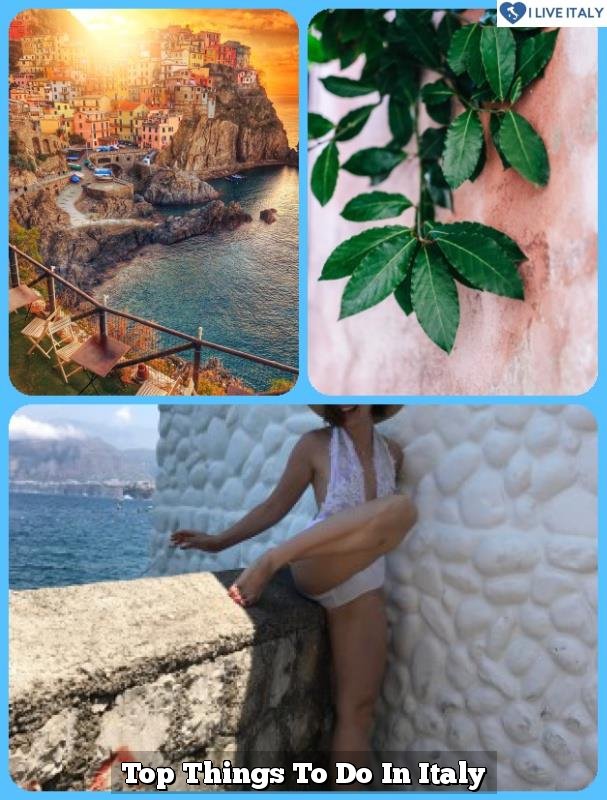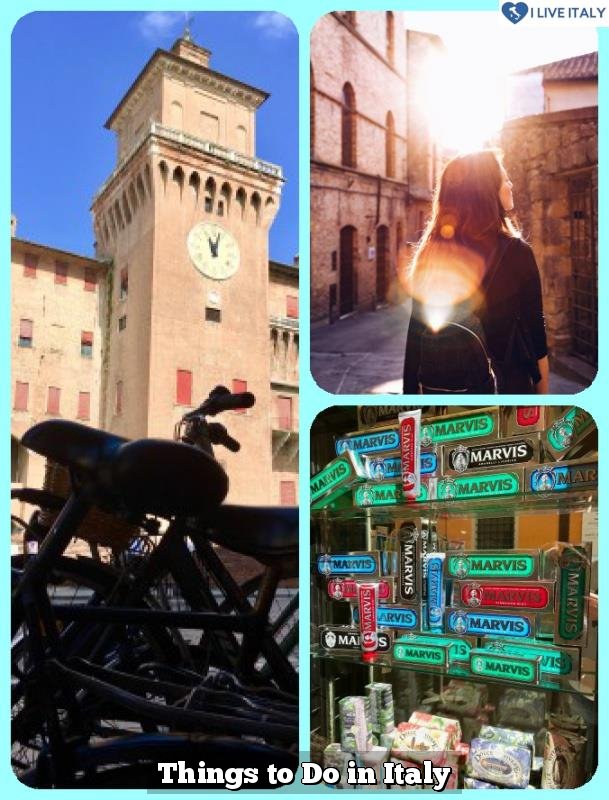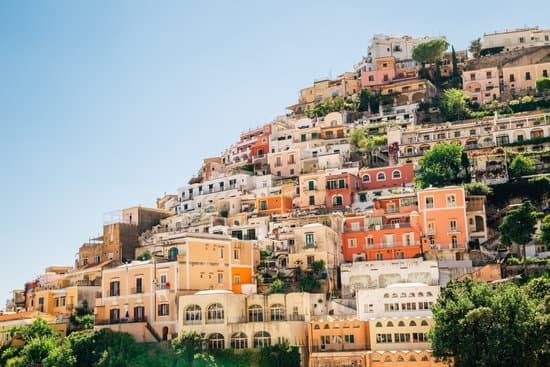Italy is a destination that enchants travelers with its rich history, vibrant culture, and delectable cuisine. However, amidst the excitement of exploring this captivating country, it’s crucial for visitors to be aware of what not to do. This article highlights the key things travelers shouldn’t do in Italy, providing essential tips and advice to ensure a respectful and enjoyable experience.
Understanding the local customs and etiquette is paramount when visiting any foreign country, and Italy is no exception. Dressing inappropriately can unintentionally offend locals and negatively impact one’s experience. Additionally, disrespecting historical sites by disregarding rules or touching artifacts can lead to serious consequences. By being mindful of these aspects, travelers can show respect for the culture and heritage of Italy.
Another important aspect often overlooked by tourists is ignoring regional cuisine. Exploring the diverse culinary traditions across the different regions of Italy not only delights taste buds but also allows visitors to avoid falling into tourist traps that serve generic dishes. Understanding how to communicate effectively in basic Italian phrases is also vital for showing respect to locals and enhancing your experience as you navigate through the country.
Furthermore, it is crucial to be aware of potential pickpocketing risks in crowded areas such as popular tourist destinations or public transportation hubs. By staying vigilant and protecting personal belongings, travelers can prevent unfortunate incidents and enjoy their time in Italy without unnecessary worry.
Dressing Inappropriately
Italy is known for its fashion and style, so it’s important for travelers to dress appropriately and respectfully when visiting the country. In order to avoid offending locals, here are some tips on how to dress appropriately in Italy:
- Cover your shoulders and knees: When visiting churches, cathedrals, or any religious site, it is important to dress modestly. Both men and women should ensure that their shoulders and knees are covered. Women can bring a shawl or scarf to cover their shoulders if needed.
- Avoid wearing revealing clothing: Italians typically dress more conservatively than in other countries. It is important to avoid wearing overly revealing clothing such as short shorts or low-cut tops, especially when visiting more traditional areas in Italy.
- Embrace Italian style: While it’s important to dress modestly, you can still embrace Italian style by opting for fashionable yet appropriate clothing. Italians are known for their sense of fashion, so consider wearing stylish outfits that are suitable for the occasion.
Additionally, it’s worth noting that some places in Italy may have stricter dress codes than others. For example, when visiting Vatican City or attending a formal event, more formal attire might be required. It’s always a good idea to research specific dress codes before visiting certain destinations.
Disrespecting Historical Sites
Visiting famous landmarks and historical sites is one of the highlights of traveling to Italy. Whether it’s marveling at the Colosseum in Rome or admiring the intricate mosaics of St. Mark’s Basilica in Venice, these sites offer a glimpse into Italy’s rich history and culture. However, it is crucial to show proper etiquette when visiting these places to ensure their preservation and respect for local customs.
Respecting Dress Codes
One of the most important aspects of showing respect at historical sites is dressing appropriately. Many religious sites in Italy have strict dress codes, requiring visitors to cover their shoulders and knees. The Vatican City, for example, strictly enforces a dress code, and visitors may be denied entry if they are not properly dressed.
It is advisable to wear modest clothing that covers your shoulders and knees when visiting these sites. Carrying a light scarf or shawl with you can be handy in case you need to cover up.
Staying on Designated Paths
It may be tempting to venture off the beaten path or touch ancient structures while exploring historical sites, but it is important to resist this urge. These landmarks are delicate and can be easily damaged by human hands or excessive weight. Always stay on designated paths and avoid touching any artifacts or structures unless explicitly allowed. Respecting barriers and signs will contribute to the preservation of these historic sites for future generations.
Avoiding Noise and Disturbances
When visiting historical sites in Italy, it is essential to be mindful of noise levels and disturbances that may disrupt other visitors or ongoing ceremonies. Keep your voice low and refrain from playing loud music or using speaker devices. Many churches hold regular masses or religious services, so it is important to maintain silence during these times out of respect for those who are practicing their faith.
Visiting famous landmarks and historical sites in Italy provides an opportunity to immerse yourself in the country’s rich history and culture. By following these tips for proper etiquette, you can ensure a respectful and enjoyable experience while preserving these sites for future generations. Remember, showing respect for Italy’s historical treasures is not only important for the locals but also contributes to the overall appreciation of the country’s cultural heritage.
Ignoring Local Customs
Italy is a country rich in culture and customs, and it is important for travelers to be aware and respectful of these traditions in order to avoid any unintentional faux pas. By gaining an understanding of Italian culture, visitors can not only enjoy a more authentic experience but also show respect to the locals. Here are some key customs that travelers should keep in mind when visiting Italy:
- Greetings: Italians value personal connections and greetings are an important part of their culture. When meeting someone for the first time or entering a small shop or restaurant, it is customary to greet with a handshake or a kiss on both cheeks. It is considered polite to make eye contact and address people using their titles, such as “Signora” (Mrs.) or “Signore” (Mr).
- Punctuality: Italians have a more relaxed attitude towards time compared to some other cultures, but it is still important to be respectful of schedules. It is generally expected to be punctual for business appointments, tours, and reservations.
- Dress Code: Italians tend to take pride in their appearance and dressing well is important. Avoid wearing beach attire or overly casual clothing when visiting religious sites or dining at nicer restaurants. It is best to dress modestly and avoid clothing that may be considered offensive or too revealing.
- Tipping: Unlike in some countries where tipping is customary, tipping in Italy is not obligatory. However, it is common practice to leave a small tip if you receive good service at a restaurant or café. Tip amounts usually range from 5% to 10% of the bill.
Being mindful of these local customs will help travelers navigate Italian culture with ease and enhance their overall experience in the country.
- Greetings
- Punctuality
- Dress Code
- Tipping
Overlooking Regional Cuisine
One of the biggest mistakes that travelers can make when visiting Italy is overlooking the incredible regional cuisine. Italy is known for its diverse and delicious food offerings, and each region has its own specialties and culinary traditions. By diving into regional cuisine, travelers can truly experience the authentic flavors of Italy and avoid falling into tourist traps.
One way to make the most of regional cuisine in Italy is by exploring local markets and food festivals. These are vibrant hubs of culinary culture where visitors can sample a variety of traditional dishes, fresh produce, and unique products.
In cities like Bologna, Florence, and Naples, there are famous food markets that offer a wide array of local delicacies. Travelers should be sure to try classic dishes like Neapolitan pizza in Naples, tagliatelle al ragù in Bologna, and gelato in Florence.
Another aspect of regional cuisine that should not be overlooked is the famous Italian wine culture. Each region in Italy produces its own unique wines with distinctive flavors. From the bold reds of Tuscany to the sparkling prosecco of Veneto, there is something for every palate. Travelers should take advantage of wine tours or tastings to learn more about Italian wines and enjoy them with food pairings specific to each region.
To ensure that you are experiencing true regional cuisine, it’s important to be mindful of tourist traps. These are typically restaurants or shops located near major tourist attractions that often serve watered-down versions of traditional dishes at inflated prices.
To avoid falling into these traps, it’s recommended to do some research beforehand or ask locals for recommendations. Additionally, avoiding restaurants with menus translated into multiple languages can also be a good indicator that you’re in a more authentic establishment.
By exploring regional specialties and avoiding tourist traps, travelers can indulge in the rich diversity of Italian cuisine while supporting local businesses and fully immersing themselves in the cultural experience Italy has to offer. Whether it’s savoring a plate of fresh pasta in Rome or enjoying a sip of fine Chianti in Tuscany, discovering the regional cuisine is an essential part of any trip to Italy.
Not Learning Basic Italian Phrases
Italy, known for its rich history, stunning landscapes, and delicious cuisine, attracts millions of tourists each year. To fully immerse oneself in the Italian culture and have a more rewarding travel experience, it is essential to learn some basic Italian phrases. Not only does this help with effective communication, but it also shows respect to the locals.
Learning a few common Italian phrases can go a long way in making interactions smoother and more enjoyable. Simple greetings such as “Buongiorno” (good morning), “Buonasera” (good evening), and “Grazie” (thank you) are appreciated by locals and can create a friendly atmosphere. Additionally, knowing how to say “Scusa” (excuse me) or “Mi scusi” (pardon me) when navigating through crowded areas or asking for directions demonstrates politeness.
Furthermore, learning basic phrases related to ordering food and drinks will greatly enhance dining experiences. Phrases like “Un cappuccino per favore” (one cappuccino please), “Un bicchiere di vino rosso/bianco” (a glass of red/white wine), or “Il conto, per favore” (the bill, please) can make interactions with waitstaff much easier. It is important to note that many Italians appreciate tourists who make an effort to speak their language, even if just a few words.
Communicating effectively through some knowledge of Italian not only helps travelers navigate daily interactions but also exhibits respect for the local culture. Italians take pride in their language, so making an effort to learn basic phrases is seen as a gesture of goodwill. It shows that travelers are interested in understanding the local culture and willing to engage with it rather than expecting everyone to adapt to them.
| Common Phrases | Translation |
|---|---|
| Buongiorno | Good morning/afternoon |
| Buonasera | Good evening |
| Grazie | Thank you |
| Scusa/Mi scusi | Excuse me/pardon me |
| Un cappuccino per favore | One cappuccino please |
Being Unaware of Pickpocketing Risks
Pickpocketing is a common issue in many popular tourist destinations, and Italy is no exception. As a traveler, it’s important to be aware of the pickpocketing risks and take necessary precautions to protect your personal belongings. This section will provide you with some valuable tips on staying vigilant and preventing theft in crowded areas.
One of the first things you should do to minimize the risk of pickpocketing is to avoid keeping all your valuables in one place. Instead, distribute them among different pockets or use a money belt that can be worn underneath your clothes. This way, even if you do become a target, the loss would be minimal.
Another effective way to deter pickpockets is by maintaining situational awareness. Pay attention to your surroundings and be cautious in crowded areas such as busy markets, public transportation, or tourist hotspots. Pickpockets often work in groups and create distractions to divert your attention while they steal from you. By being alert and focused on your belongings, you decrease the chances of falling victim to their tactics.
Additionally, it’s essential to keep an eye on your belongings when dining at outdoor cafes or restaurants. While undeniably enjoyable, these spaces can easily become targets for opportunistic thieves. Make sure not to leave bags unattended or hang them on the back of chairs where they can be easily snatched.
Lastly, consider utilizing additional security measures such as using locks on backpacks or purses with zipper closures. These small steps can go a long way in deterring potential thieves from targeting you and making it more difficult for them if they attempt a theft.
By practicing vigilance and taking necessary precautions against pickpocketing risks, you can enjoy your time in Italy without worrying about losing your personal belongings. Remember that prevention is key when it comes to safeguarding yourself from this type of crime during your travels.
Disregarding Table Etiquette
Italy is known for its rich culinary traditions and dining experiences. In order to fully immerse themselves in the Italian culture and enjoy their meals to the fullest, travelers should be aware of the proper table etiquette.
Disregarding table etiquette can not only lead to some awkward moments, but it can also be seen as disrespectful by the locals. By understanding Italian dining customs and avoiding common dining blunders, travelers can have a more enjoyable and authentic experience during their stay in Italy.
One important aspect of Italian table etiquette is abstaining from using utensils incorrectly. Italians are known for their love of pasta, and when eating pasta dishes, it is important to use a fork instead of a spoon. Twirling pasta with a spoon can be seen as improper and nontraditional.
Another important tip is to refrain from cutting bread or pizza with a knife. Instead, Italians prefer tearing off bite-sized pieces of bread or folding pizza slices and eating them by hand.
In addition to proper utensil usage, it is crucial to understand the concept of “il conto” or the bill in Italian restaurants. Unlike other cultures where you may need to ask for the bill when you are ready to leave, in Italy it is customary for the waitstaff to bring the bill only when requested.
It might seem pushy or rude in Italian culture if they bring your bill without asking for it explicitly. This allows diners to enjoy their meal at a leisurely pace without feeling rushed.
Overall, being mindful of table etiquette can greatly enhance your dining experience in Italy. By respecting the local customs and traditions, travelers can show their appreciation for Italian culture while indulging in delicious meals.
| Dining Blunders | Tips |
|---|---|
| Using a spoon when twirling pasta | Use a fork instead |
| Cutting bread or pizza with a knife | Tear off bite-sized pieces or eat by hand |
| Not requesting the bill in Italian restaurants | Ask for the bill when you are ready to leave |
Not Respecting Local Transportation
Italy has a well-developed public transportation system that is efficient and widely used by both locals and tourists. However, it is essential for travelers to respect local transportation etiquette to ensure a smooth and respectful experience. Here are some tips for using public transportation in Italy:
Know the Rules
Before using any form of public transportation in Italy, it is important to familiarize yourself with the rules and regulations. This includes understanding how to purchase tickets, where and when they need to be validated, and any restrictions or guidelines specific to certain modes of transport. Ignorance of the rules can lead to fines and unnecessary complications during your journey.
Offer Your Seat
In Italy, it is customary to offer your seat on public transportation to those who may be in need, such as elderly people, pregnant women, or individuals with disabilities. It is considered polite and respectful to stand up and offer your seat when necessary.
Keep Your Belongings Secure
As with any busy public transportation system, there is always a risk of theft or pickpocketing. It is important to keep your belongings secure at all times while using public transportation in Italy. This includes keeping your bags zipped or closed securely and holding onto them tightly. Avoid displaying valuable items such as expensive jewelry or electronics, as this can attract unwanted attention.
Respect Personal Space
Italians generally value personal space and may consider standing too close or touching others while on public transportation as intrusive. It is important to be mindful of personal space boundaries and avoid overcrowding others by keeping an appropriate distance.
By following these tips for using public transportation in Italy, travelers can have a smoother experience while respecting local etiquette. Remember that being courteous and considerate not only enhances your own travel experience but also contributes positively to the overall atmosphere on public transportation for everyone involved.
Failing to Plan Sightseeing in Advance
When visiting Italy, it is essential to plan sightseeing activities in advance in order to avoid long lines and overcrowded attractions. Italy is known for its iconic landmarks and historical sites, which attract millions of tourists each year. Therefore, without proper planning, travelers may find themselves wasting hours waiting in line or being unable to fully appreciate the beauty of these attractions due to large crowds.
The Benefits of Planning Ahead
Planning ahead allows travelers to make the most of their time in Italy and ensure a smooth sightseeing experience. By researching and booking tickets in advance, visitors can skip the long queues that are often found at popular attractions such as the Colosseum in Rome or the Uffizi Gallery in Florence. Many museums and historical sites offer timed-entry tickets or allow visitors to reserve specific time slots online, which can significantly reduce wait times.
Moreover, planning ahead enables travelers to create a structured itinerary that includes all the sights they wish to see. This helps avoid wasted time and allows for better time management, ensuring that no important landmarks are missed. By knowing exactly when and where they will be visiting each attraction, travelers can maximize their time exploring Italy’s cultural treasures.
Tips for Planning Sightseeing Activities
To plan sightseeing activities effectively, it is important to conduct thorough research beforehand. Start by making a list of must-see attractions based on personal interests. Prioritize these landmarks and allocate sufficient time for each one within the available travel schedule.
Next, check the official websites of each attraction to gather information about opening hours, ticket prices, and any specific requirements or restrictions. Look for options to purchase tickets online or make reservations if available.
Consider using mobile apps or websites that provide real-time crowd updates at different attractions. These platforms allow travelers to assess crowd levels and choose the best times to visit certain sites with fewer people.
Lastly, consider booking guided tours with knowledgeable local guides who can provide insights and context to the attractions being visited. These tours often include skip-the-line privileges, minimizing wait times and enhancing the overall experience.
By planning sightseeing activities in advance, travelers can enjoy their time in Italy to the fullest, without wasting precious moments standing in line or feeling overwhelmed by crowds. Ultimately, proper planning allows visitors to immerse themselves in the rich cultural heritage and historical treasures that Italy has to offer.
Leaving Valuables Unattended at Beaches
Italy is known for its beautiful beaches, attracting countless tourists every year. However, it is important for travelers to be aware of the risk of theft and take necessary precautions to secure their belongings. Leaving valuables unattended can result in them being stolen, which can quickly ruin a vacation.
To prevent theft at the beach, it is first important to only bring essential items with you. Leave unnecessary valuables such as expensive jewelry or large amounts of cash locked securely in your hotel room. It is also a good idea to bring a lockable bag or pouch to store your belongings while you enjoy the beach. This will deter potential thieves who are looking for easy targets.
Another important tip is to never leave your belongings unattended, even if you plan on going for a quick swim or walk along the beach. Thieves are always on the lookout for opportunities when people are distracted or not paying attention. Take turns with your travel companions to ensure that someone is always keeping an eye on your belongings.
Additionally, consider investing in small, portable safes or lockers that are specifically designed for use at the beach. These safes can be securely attached to beach umbrellas or rented from nearby facilities. They provide an extra layer of security and peace of mind, knowing that your valuables are protected while you relax and enjoy the beach.
By following these simple tips, travelers can ensure that their valuables are safe and protected while enjoying Italy’s beautiful beaches.
| Tips | Prevention Methods |
|---|---|
| Only bring essential items | Leave unnecessary valuables locked securely in hotel room |
| Bring a lockable bag or pouch | Deter potential thieves looking for easy targets |
| Never leave belongings unattended | Take turns with travel companions to keep an eye on belongings |
| Invest in small, portable safes or lockers | Attach securely to beach umbrellas or rent from nearby facilities |
Conclusion
In conclusion, it is crucial for travelers to be aware of what not to do in order to have a more enjoyable and respectful experience in Italy. By following the tips provided in this article, visitors can avoid offending locals and show proper etiquette when visiting historical sites. Understanding Italian culture and customs will also help travelers avoid any faux pas and navigate regional cuisine without falling into tourist traps.
Additionally, learning basic Italian phrases is essential for effective communication and showing respect to the locals. By staying vigilant and protecting personal belongings in crowded areas, travelers can minimize the risk of falling victim to pickpocketing, which is a common concern in popular tourist destinations. Similarly, understanding Italian dining customs and table etiquette will ensure a smooth dining experience without any blunders.
Respecting local transportation etiquette and using public transportation wisely is another consideration for travelers in Italy. Planning sightseeing activities in advance helps avoid long lines and overcrowded attractions, allowing for a more relaxed exploration of the country’s rich history and unique landmarks. Lastly, securing belongings at popular Italian beaches will prevent theft and allow visitors to fully enjoy their time by the sea.
By taking these precautions into account, travelers can enhance their experience in Italy while also demonstrating their respect for the country’s culture and customs. Ultimately, being aware of what not to do goes a long way in ensuring a memorable trip that is both enjoyable for tourists and respectful towards local residents.

I’m a passionate traveler, writer, and Italophile. My fascination with Italy’s history, art, and culture has led me on countless adventures across the Italian landscape. Through “I Live Italy,” I share my love for this extraordinary country and aims to inspire others to explore its boundless beauty.





